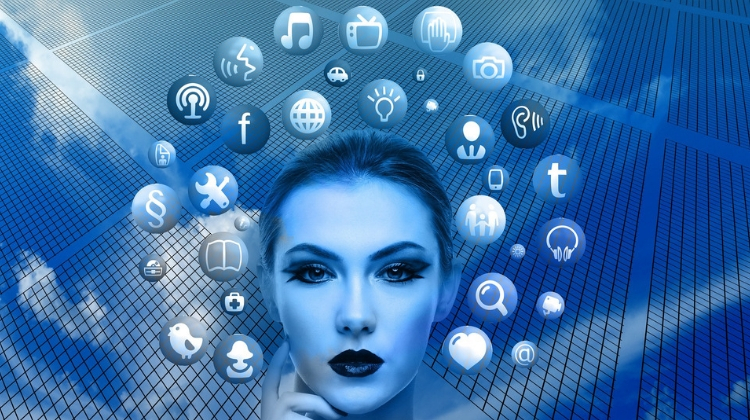Archives
How Social Media Is Saving Lives

Facebook, Twitter, and even MySpace are all typically associated with teen diva’s that detail every facet of their trivial lives, either in terribly misspelled text or via awkward pictures that make most parents skin crawl.
But what gained its initial popularity as a purely entertainment and networking platform has evolved into much more. It is estimated that 66% of the adult population is connected to at least one social network.
While the majority of these sites are still mostly Farmville games and status updates, more and more organizations and individuals are beginning to leverage the power behind the social media machine to actively save lives.
Why is this?
Think about it for a moment, as long as you have any type of signal on your smart phone or a hotspot on your laptop, at the push of a button you can let all of your friends and family know that you are ok after a disaster.
News sites and emergency agencies such as FEMA are often wrapped in so much red tape that by the time any new information is released it may no longer be relevant or too late to be of any real use.
Case in point:
In 2011, Thailand was hit by the worst flood the country had seen in 60 years. The flood waters moved from the northern areas of Thailand all the way to central Thailand, hitting much of the countryside and eventually Bangkok.
During this time, information provided by official government channels and newspapers were often contradictory. One day officials claimed Bangkok would be safe, the next that it wasn’t. Reading the papers often yielded only speculation.
Twitter became one of the biggest information sources available in the entire country. Different parts of Thailand and different areas of Bangkok used Twitter to announce what areas were safe and what areas weren’t.
A series of videos explaining basic flood safety, such as how to not get electrocuted while touching the water, was produced by safety organizations and spread through Twitter.
Local residents picked up the slack left by news agencies by broadcasting what areas were safe, which needed help and other important information.
The floods in Thailand are just one example of how social media can be an effective emergency warning system but it needs to be made clear that this type of medium not fool proof and is still susceptible to the actions of individuals with ill intent. In the digital haze that we live in, it is very easy for a single 140 character message to snowball into media frenzy. Everything on the internet needs to be taken with a grain of salt
This type of near instant update is becoming increasingly popular with individuals but Emergency Management Organizations are slow to utilize them. Although with how slow their reactions are in general this shouldn’t come as a shock to anyone.
The Red Cross is pioneering a foray into social media and has recently launched a social media monitoring platform — the first of its kind — to not only share safety tips, but to also encourage people to use social tools to better prepare themselves for disaster.
They have targeted cities like Dallas, Texas to test an emergency alert system that warns followers on twitter of tornado touchdowns in the area. This is the first step in what I see as one of the future paths for emergency management and emergency response.
With that being said, using social media for disaster management and as a early warning system by government is still very much in its infancy and has a long way to go and a lot of testing before it becomes a reliable system, but it is getting there.
While all of that testing may take years to complete, the greatest asset that social media currently has is in disaster recovery and charitable donations.
There are hundreds if not thousands of Facebook pages dedicated to charitable causes and promoting issues that really matter.
Take Above the Influence, for example. Their Facebook page was established as part of the White House’s Office of National Drug Control Policy. It was created so that teens who are being pressured into drugs and alcohol have a safe place to go online. This page, with 1.8 million likes, serves as a virtual community so that teens, who frequently feel isolated and alone, can connect with others just like them, and create a support network is available around the clock.
Small non-profit organizations who can’t afford the publicity that larger organizations can are now able to take their cause to Facebook to spread their message without needing a multimillion dollar advertising fund.. Hundreds of animal activists call Facebook home too, from small local shelters to the ASPCA. The key to financial survival for so many of these charities is visibility and Facebook provides the medium by which the visibility and reach of these organizations can be extended exponentially.
Whether the cause is widely known or not, there is ready access to 900 million users, 155 million of which live in the U.S. alone. But Facebook isn’t the only medium by which charities can gain attention. Twitter also provides a sense of immediacy for the charitable causes.
The Haitian earthquake in 2010 and the 2011 Japanese tsunami are unfortunately perfect examples of Twitter’s power. While Facebook actions are spurred on primarily by family and friends’ posts and updates, celebrities took Twitter to reach out to their throngs of fans and ask for help. By tweeting to their fans for donations, funds poured in to the Red Cross and other organizations struggling to help the disaster victims.
While Facebook and Twitter are so often viewed as a waste of time, when they are properly used, can become the powerhouse of many a good cause that would otherwise be extinguished.
In all that time spent playing games and liking photos, would you ever have thought that Facebook could save someone else’s life or even your own?
If places that promote the research and study of new diseases or the recovery of areas devastated by disaster are able to continue their efforts without the majority of donated funds being allotted to further advertising, how many more lives could be saved?
Cell Phones for Survival
The Best Tech For Your Bug Out Bag
12 Survival Smartphone Apps | Preparedness
-

 Do It Yourself7 months ago
Do It Yourself7 months agoParacord Projects | 36 Cool Paracord Ideas For Your Paracord Survival Projects
-

 Do It Yourself9 months ago
Do It Yourself9 months agoHow To Make Paracord Survival Bracelets | DIY Survival Prepping
-

 Do It Yourself9 months ago
Do It Yourself9 months ago21 Home Remedies For Toothache Pain Relief
-

 Do It Yourself10 months ago
Do It Yourself10 months agoSurvival DIY: How To Melt Aluminum Cans For Casting
-

 Exports8 months ago
Exports8 months agoAre Switchblades Legal? Knife Laws By State




Jan Turner
January 13, 2013 at 5:48 PM
You forgot to add a candle or two. When you are stuck someplace that is cold – especially in a car – a candle will add that tiny bit of warmth that might make the difference between freezing to death and/or making it.
mike
January 25, 2013 at 1:18 AM
Candles are great to heat up a car or van but can be really dangerous. One time i was sleeping in my jeep and had five or six candles on my dash . It was nice and warm then my window cracked.
One time i was sleeping in my van with a candle on a ice chest. I woke up with my ice chest lid half melted with a bic lighter half melted burning Like a big plastic candle. Good thing my van was not air tight.
And last i woke up and lighted a candle just to warm my hands before going to work and i went to a gas station to grab coffee and when i got back to my van it was on fire. A sleeping bag in the back was on fire. I grabbed my keys unlocked the back doors and grabbed my fire extinguisher by the back door and put the fire out. My windshield was black i wiped it off and got out of there before the fire trucks arrived at the gas station i was at.
Yes i am lucky to be alive.now i only use my candle lanterns unless i am at home with a candle in a glass cup. But remember candles are dangers in a vehicle …
Pingback: How to Spot Fake News and Propaganda on Social Media
Pingback: Holacracy and Self-Management With Mark Simpson [PODCAST] - Cooking in Quarantine